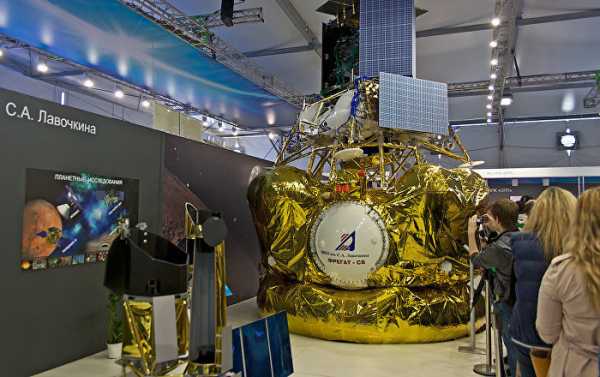
The involvement of foreign countries in the ambitious Russian lunar mission is not limited to testing equipment. A lunar mass spectrometer manufactured jointly with Switzerland will be installed on board the Luna-25 to study probes of lunar soil.
The launch readiness of equipment installed on Luna-25, the first lunar lander mission from the Russian Federal Space Agency (Roscosmos) in the country’s modern history, is to be assessed with the help of US and European equipment, according to the procurement website of its manufacturer, the Lavochkin Scientific and Production Association, one of Russia’s leading space enterprises within Roscosmos.
According to the technical requirement specifications for the alignment of structures along the axis for the “Luna-Glob” project, four spherical reflectors are to be purchased in Switzerland, and 250 magnetic base holders from the US.
The need to resort to foreign equipment for testing the Russian lunar station was explained by a lack of Russian analogues, according to the manufacturer.
The involvement of foreign countries in the ambitious Russian lunar mission is not limited to testing equipment. A lunar mass spectrometer manufactured jointly with Switzerland will be installed on board the Luna-25 to study lunar soil.
When Luna-25 lands on the Moon, it will image the terrain using a European Pilot-D camera built specifically for landing by the European Space Agency (ESA).
A Luna-26 orbiter is scheduled to be sent to lunar orbit two years after Luna-25, to make remote scientific measurements and, potentially act as a communications relay for the next lander mission.
The currently targeted launch date for Luna-25 is 1 October 2021, with the flight to the moon expected to take between 4.5 and 5.5 days.
Luna-25 expected to land near the lunar South Pole, with developers aiming to test soft landing technology in the moon’s polar region.
The main landing site is to the north of the lunar impact crater Boguslavsky, near the southern lunar limb. A backup landing site is southwest of the Mansini crater.
The device will spend another five days in lunar orbit.
The project is part of the Luna-Glob Moon exploration programme by Roscosmos, with the aim of progressing toward the creation of a fully robotic lunar base. Eventually, the programme will continue with crewed lunar missions.
Later this decade, Luna-26 will reportedly map the moon’s surface, and Luna-27 will study the lunar regolith, the rock and dust that cover the moon’s surface, after landing with a European piloting system.
Sourse: sputniknews.com
0.00 (0%) 0 votes


































